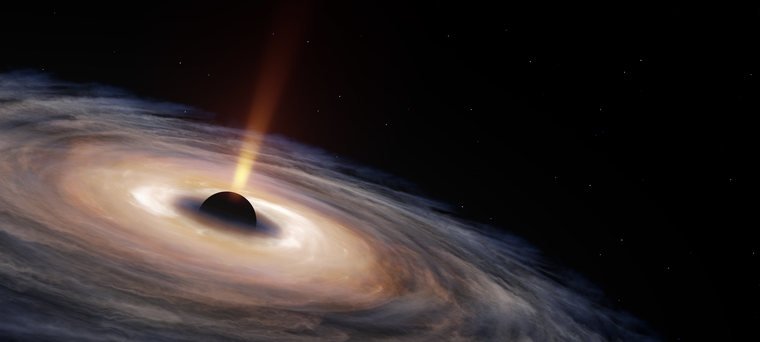Galaxies emit light. According to Einstein’s Theory of Relativity, the radiation energy is equivalent to mass. This means that galaxies lose mass, and therefore, their gravitational binding weakens, and the orbit of their stars must therefore expand.
What I have outlined above is rather straightforward, though I could not find it published anywhere in the scientific literature. So I decided to submit a short paper about it, to motivate observers to gather future data toward validating this phenomenon. The paper was accepted for publication just two days later and established my personal record in the shortest lapse of time between inception and publication of a scientific idea.
Another way to think about the effect I’ve described is that galaxies, like our own Milky Way, are held together by gravity. If the mass of the Milky Way is lowered, the orbit of the Sun around our Galactic center should expand.
This effect occurs for the same reason that the orbit of the Earth around the Sun expands as the Sun emits radiation and loses mass. In the context of the Earth, the motion is tiny–about four inches per decade. Gravity may be viewed as a spring binding the Earth to the Sun and as the spring weakens–the Earth moves out.
The motion of a habitable planet like the Earth away from its host star could make the planet slightly cooler and so it may be counteracted by a “planetary engineering project” of an advanced technological civilization. The goal would be to push the home planet inwards in order to keep its illumination and average surface temperature unchanged over a long period of time. If astronomers develop instruments that could reach the needed sensitivity to detect the expected migration of a habitable planet away from its host star and they will not detect the expected motion, then this could unravel the existence of a major engineering project to propel the planet artificially.
The expansion speed of the Sun away from the Milky-Way center is a billion times faster than the Earth’s migration from the Sun and reaches a magnitude of ten inches per second. This expansion speed could be even larger for stars inhabiting more luminous galaxies.
The largest galactic expansion speeds might be detectable by high-resolution spectrographs on the next generation of ground-based telescopes, such as the High-Resolution Spectrograph on the European Extremely Large Telescope or the G-CLEF Echelle Spectrograph on the Giant Magellan Telescope. Accomplishing the required sensitivity will take us a step closer to noticing stellar engines that deviate from their natural gravitational path.
While representing greater engineering ambitions than planetary engines, stellar engines are hypothesized megastructures that extract energy from a star in order to generate thrust and accelerate it. The qualitative notion of stellar engines appeared as early as in 1937 in Olaf Stapledon’s book titled Star Maker: “The occasion of the first accident was an attempt to detach a star from its natural course and direct it upon an intergalactic voyage… Plans were therefore made for projecting several stars with their attendant systems of worlds across the vast ocean of space that separated the two floating islets of civilization.”
The astronomer Fritz Zwicky, who discovered dark matter, explicitly articulated a stellar engine in his characteristically wide-ranging monograph titled Morphological Astronomy: “Considering the sun itself, many changes are imaginable. Most fascinating is perhaps the possibility of accelerating it to higher speeds, for instance, 1000 km/sec directed toward α-Centauri in whose neighborhood our descendants then might arrive a thousand years hence. All of these projects could be realized through the action of nuclear fusion jets, using the matter constituting the sun and the planets as nuclear propellants.”
In 1987 Leonid Shkadov came up with a specific design for a stellar engine wherein a gigantic mirror was deployed to reflect a fraction of the radiation back toward the host star. Other designs were extensively discussed since then.
In the near future, SpaceX will launch a 400-feet tall Starship, the largest rocket in human history. If there are smarter kids on our cosmic block, the obvious question is how much more ambitious are their rocketry efforts? Time will tell if we should be inspired by their accomplishments or vice versa.
Avi Loeb is the head of the Galileo Project, founding director of Harvard University’s – Black Hole Initiative, director of the Institute for Theory and Computation at the Harvard-Smithsonian Center for Astrophysics, and the former chair of the astronomy department at Harvard University (2011-2020). He chairs the advisory board for the Breakthrough Starshot project, and is a former member of the President’s Council of Advisors onScience and Technology and a former chair of the Board on Physics and Astronomy of the National Academies. He is the bestselling author of “Extraterrestrial: The First Sign of Intelligent Life Beyond Earth” and a co-author of the textbook “Life in the Cosmos”, both published in 2021.

